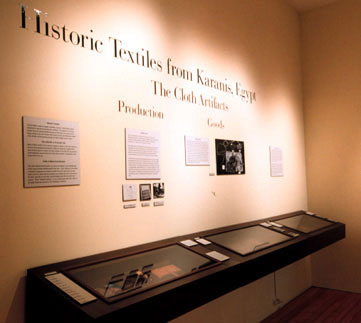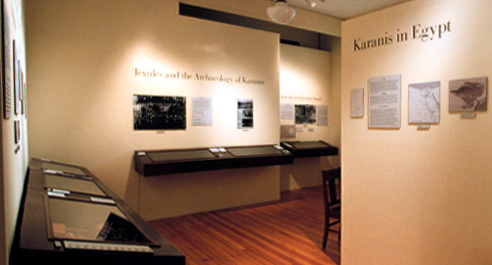
 |
 |
 |
 |
 |
 |
 |
 |
 |
 |
 |
 |
Historic Textiles from Karanis, Egypt: The Cloth Artifacts
 Historic
Textiles
Historic
Textiles
Ancient fabric, made of organic materials, is prone to deterioration unless maintained in special environmental conditions. The majority of surviving textiles from the ancient Mediterranean and Near East were preserved in Egypt, thanks to its arid climate. Best known are the post-Pharaonic textiles of the Roman and Byzantine periods, the latter usually called “Coptic.”
The Afterlife vs. Everyday Life
Most of these textiles were found in cemetery contexts, where they had been used as burial garments and shrouds. Unlike the relatively complete cloth items found in graves, textiles from the settings of everyday life are generally small fragments, because they have been used, mended or refashioned, and reused until worn out.
Cloth Artifacts from Karanis
The cloth artifacts from Karanis were preserved thanks to the desertification of the region and the abandonment of the town. They conform to the pattern of intensive long-term use found in textiles from town sites: they are rags. Once, however, these tattered remnants were clothes that were worn next to the skin, caps that covered hair, and furnishings that offered comfort and privacy. These “intimate artifacts,” as one archaeologist calls them, attest to the daily habits and activities of the inhabitants of Karanis.
